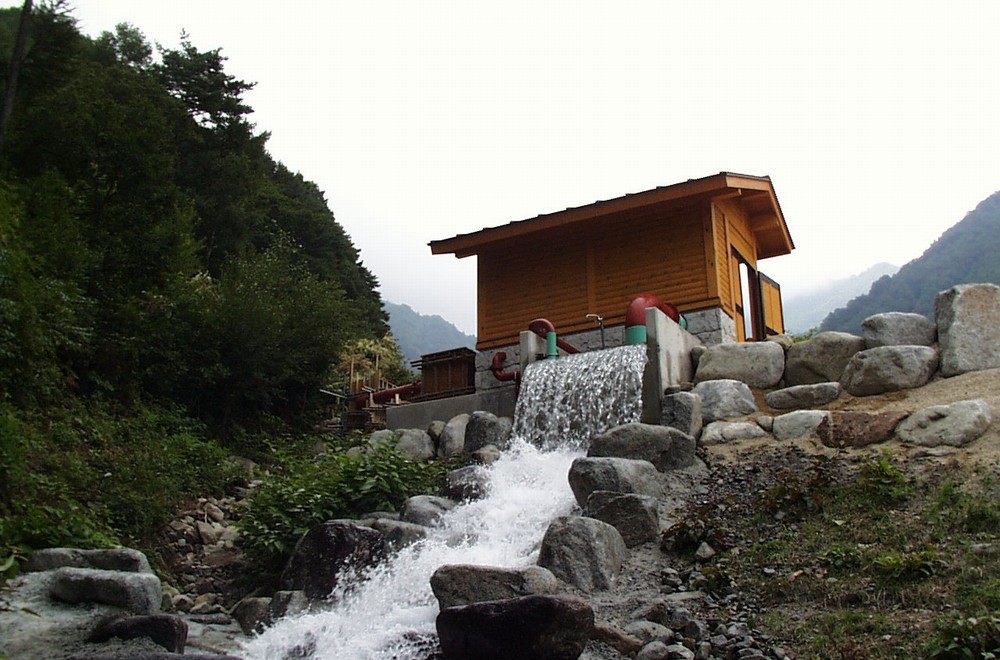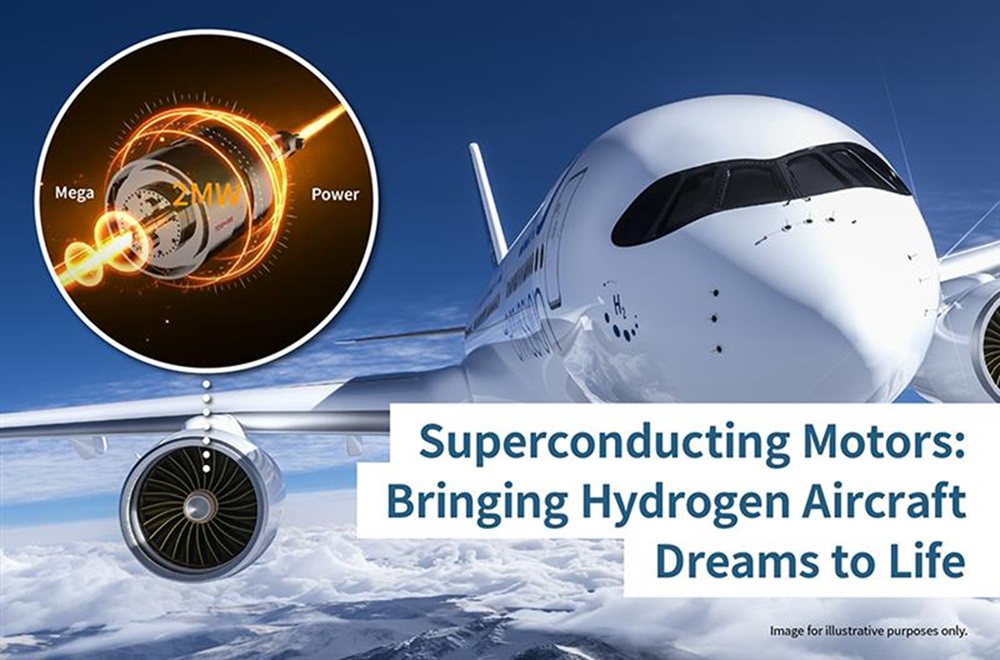Toshiba’s young engineers: Tackling climate change with abundant water resources
2022/09/07 Toshiba Clip Team
- Hydropower, a renewable energy made for Japan’s landscape.
- Importance of creating technical documentation for the next generation of engineers.
- Personal growth realized by solid discussions and communications with team.
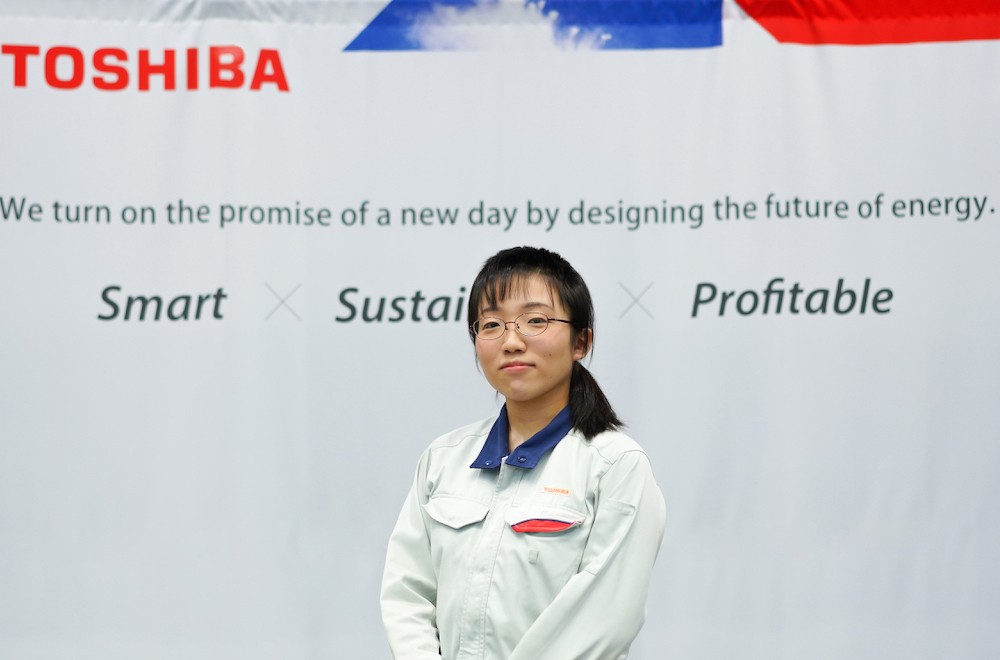
Sweltering heat and torrential rain. Extreme weather events across the globe, triggered by climate change are being countered with efforts to reduce and control greenhouse gas emissions. Nonetheless, we need and rely on electricity to sustain our lives, and that is why attention is focused on renewable energy, which does not directly release greenhouse gases.
In Japan, rich in water resources, a land of mountains, water wheels came into use long ago. Hydropower generation, a renewable energy source, also has a long history, and has supported the country for over 130 years. Toshiba supplied the water turbine generator for Japan’s first commercial hydroelectric power plant in 1894, a step forward for the company and hydropower generation. We have inherited the cumulative technological assets of the young engineers who worked there, and we can follow their reality, and understand their thinking as they grew and developed.
Supplying a renewable energy ideally suited to Japan
When we talk about renewable energy, solar, wind, geothermal, hydro, and biomass sources are all seen as having great potential. None rely on fossil fuels and they can all be produced domestically, making them useful in terms of energy security.
Aya Sasaki is an engineer at Toshiba Energy Systems & Solutions Corporation, an expert in the mechanical design of hydropower equipment, particularly to retrofit generators into old plants. “There are numerous sources of renewable energy, but Japan has abundant water resources, with an excellent and stable hydropower supply. And also, there are many sites suited to hydropower generation. Hydropower also has a long history among power generation methods deployed here.”
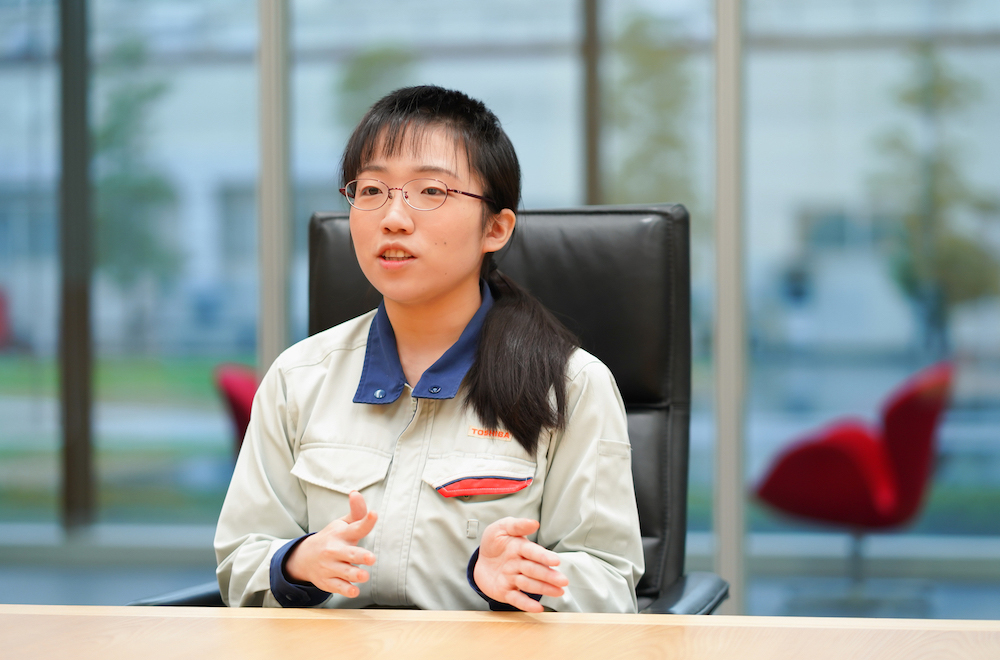
Aya Sasaki, Hydro Generator Design Group, Design Dept.2, Keihin Product Operations, Toshiba Energy Systems & Solutions Corporation
A typical large-scale hydropower system comprises a reservoir, and hydraulic turbines and generators. Turbines and generators have long lifetimes, and equipment replacement and outage cycles are a few decades or so. By the time work on a system is requited, the engineer who worked on the last replacement might have retired. “In this situation,” Sasaki explains, “we have to rely on the documentation left by previous engineers.”
“When you look at the documentation, you understand that you have the designer’s thoughts in your hands,” says Sasaki. “The pressure on me is to create documentation that future engineers will be able to understand clearly. When I work on my own materials, I bear in mind the advice of my seniors: ‘Even if you were to forget everything, looking at the documentation should give you answers to all your questions.'”
Of course, replacement is not only equipment exchange, as Sasaki explains. She expects to inject 21st century digital technologies unique to Toshiba into her projects, to make them something that engineers in the decades ahead can take pride in. One initiative is to carry out flexible maintenance based on operating data from equipment collected by sensors and IoT technology.
“Stable operation is really necessary for renewable energy to become a main power source,” explains Sasaki. “The ideal is to be able to repair failures without having to stop the generator. If we can constantly use data to verify whether equipment is operating as expected, the way we do maintenance will change in the future. While hydropower plants might look from the same from the outside, the systems inside will change greatly.”
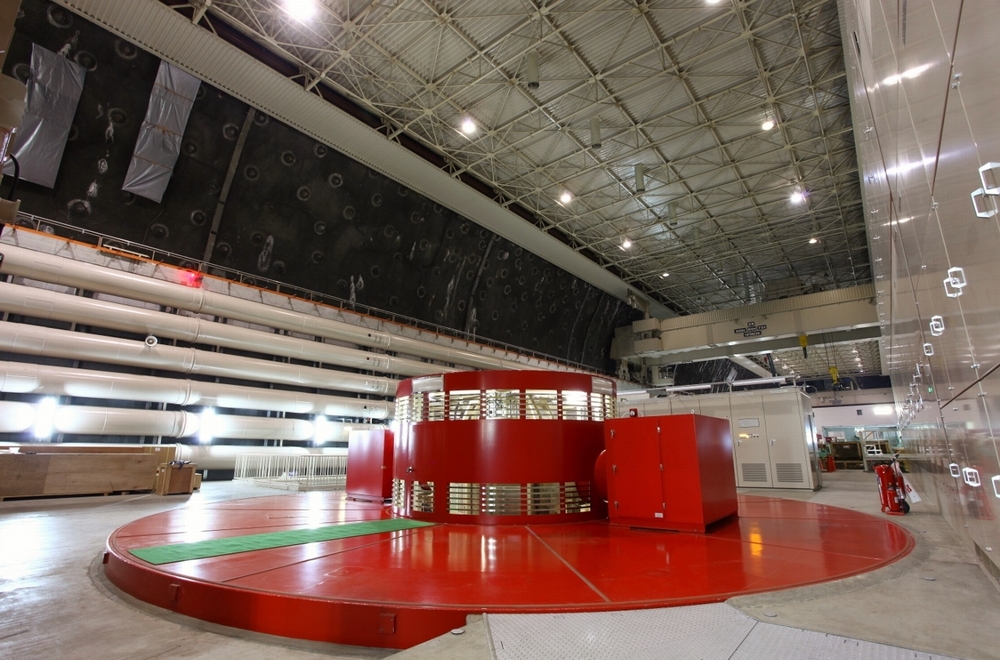
The pumped storage hydropower system at the Kazunogawa plant in Yamanashi Prefecture adjusts output as electricity demand fluctuates
Valuable on-site experience and collaboration between experts maximize growth
Asked why she decided to join Toshiba, Sasaki has a ready answer. “I wanted a job where anything I made also contributed to society. I also wanted to design tangible things, and on a large scale, so for me, working on energy and hydropower is about putting my thoughts into action.
At university, Sasaki majored in mechanical engineering, and studied the four major areas of mechanics: material mechanics, thermodynamics, fluid mechanics, and dynamics of machinery. Based on her studies, she now works on detailed mechanical design of hydropower systems. But even though she is a designer, she gets few chances to see actual generators and other equipment.
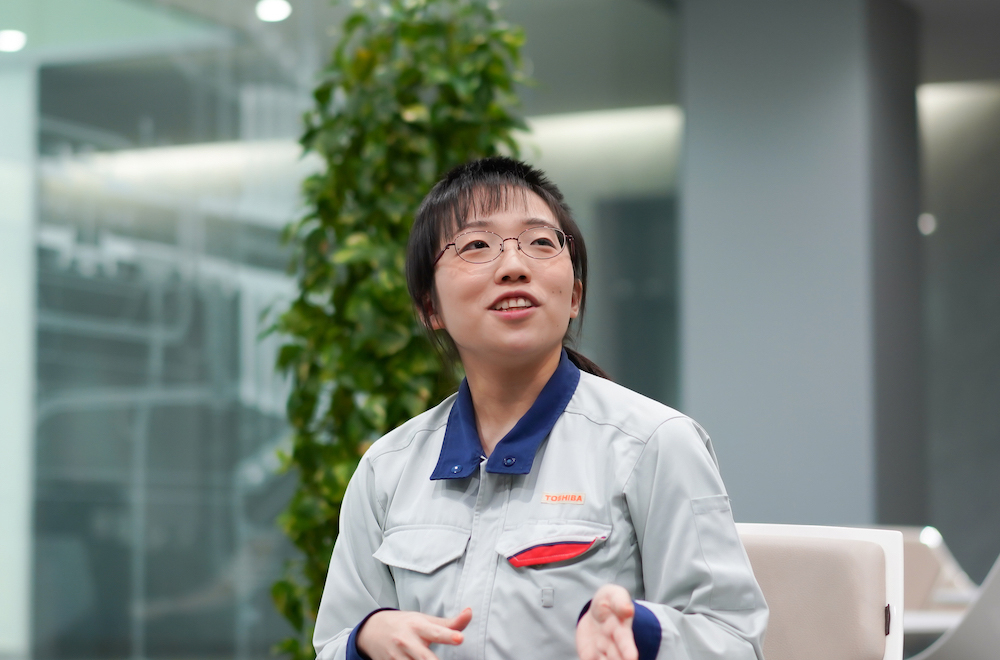
Ms. Sasaki talks about her desire as a student: “I wanted the things I made to contribute to society”
Almost all of Japan’s hydropower plants are unmanned, remotely monitored and controlled. During construction, components are typically assembled on-site rather than where they are designed, so that there are relatively few opportunities for her and colleagues to see the actual assembled equipment. And since projects progress over several years, it is also difficult to get experience by working on many projects.
“Chances for on-site experience are really valuable, so that and in this respect I’ve been really fortunate,” says Sasaki. “I’ve been able to make site visits, even alone, and I was entrusted with being a project leader only a few years after joining the company. My seniors have made sure I have opportunities to grow, and that is what I am trying to do. I want to improve as an engineer, and I am asking more and more questions to get the knowledge I need.”
Beyond this, one thing Ms. Sasaki consider a plus unique to Toshiba is close cooperation with other departments—and Toshiba has many departments. Collaborations allow her to hear many opinions from perspectives she might not be aware of, and help her to deepen her knowledge and broaden her horizons as an engineer.
“Whenever I design something where there ae constraints on the shape, I really want to know about what it going on at the site. For instance, if you have machinery that has to be maintained by a person from inside, only a service specialist will know whether there is enough space for someone to get in and do the work.
“When something like this comes up, I find it useful to show the drawings to people in the assembly department, so we can bounce off each other’s perspectives. When I do that I feel like I have grown a step further. In one case, I found a solution to a problem by having a special new tool made, this experience expanded the options open to me as an engineer. A good thing about Toshiba is that this kind of collaboration can be achieved smoothly, and it maximizes my growth.”
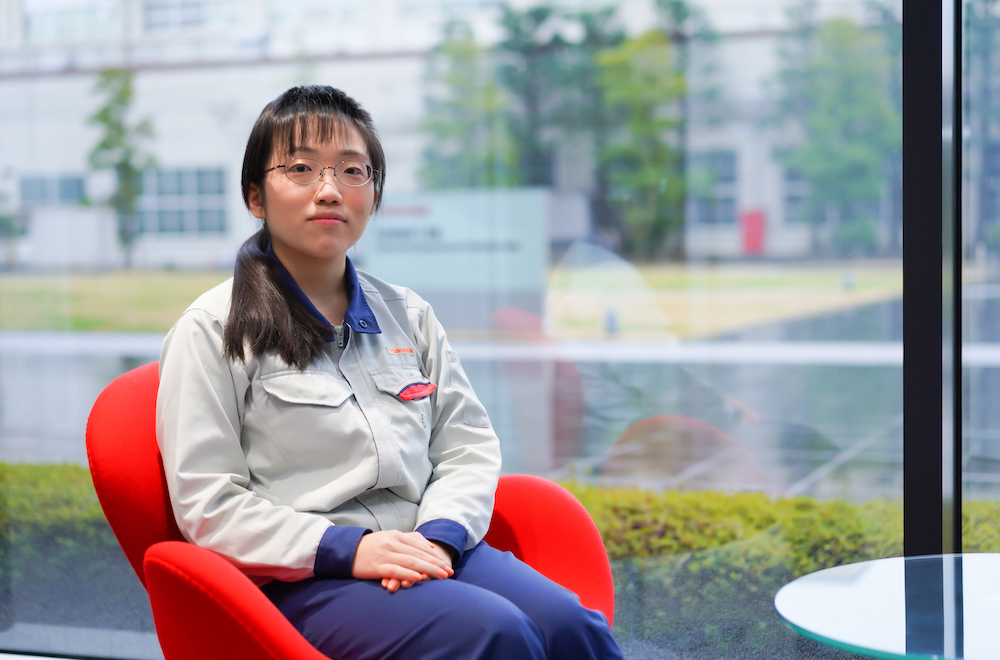
“Toshiba’s appeal is interdepartmental collaboration,” says Ms. Sasaki
Ms. Sasaki has been fulfilling her dream of contributing to society with what she makes and is continuing to grow. She shows her willingness to contribute to a sustainable society through hydroelectric power generation suited to the Japanese landscape.
![]()






